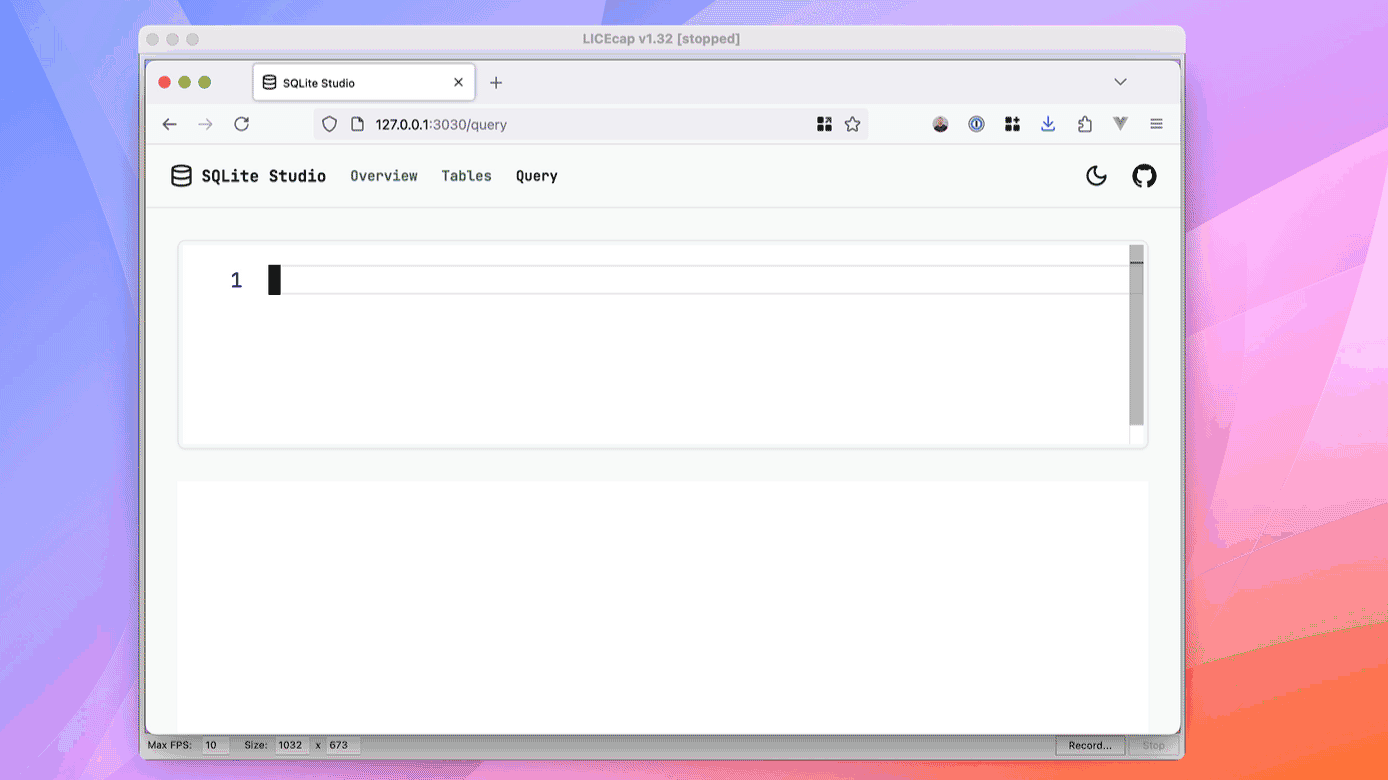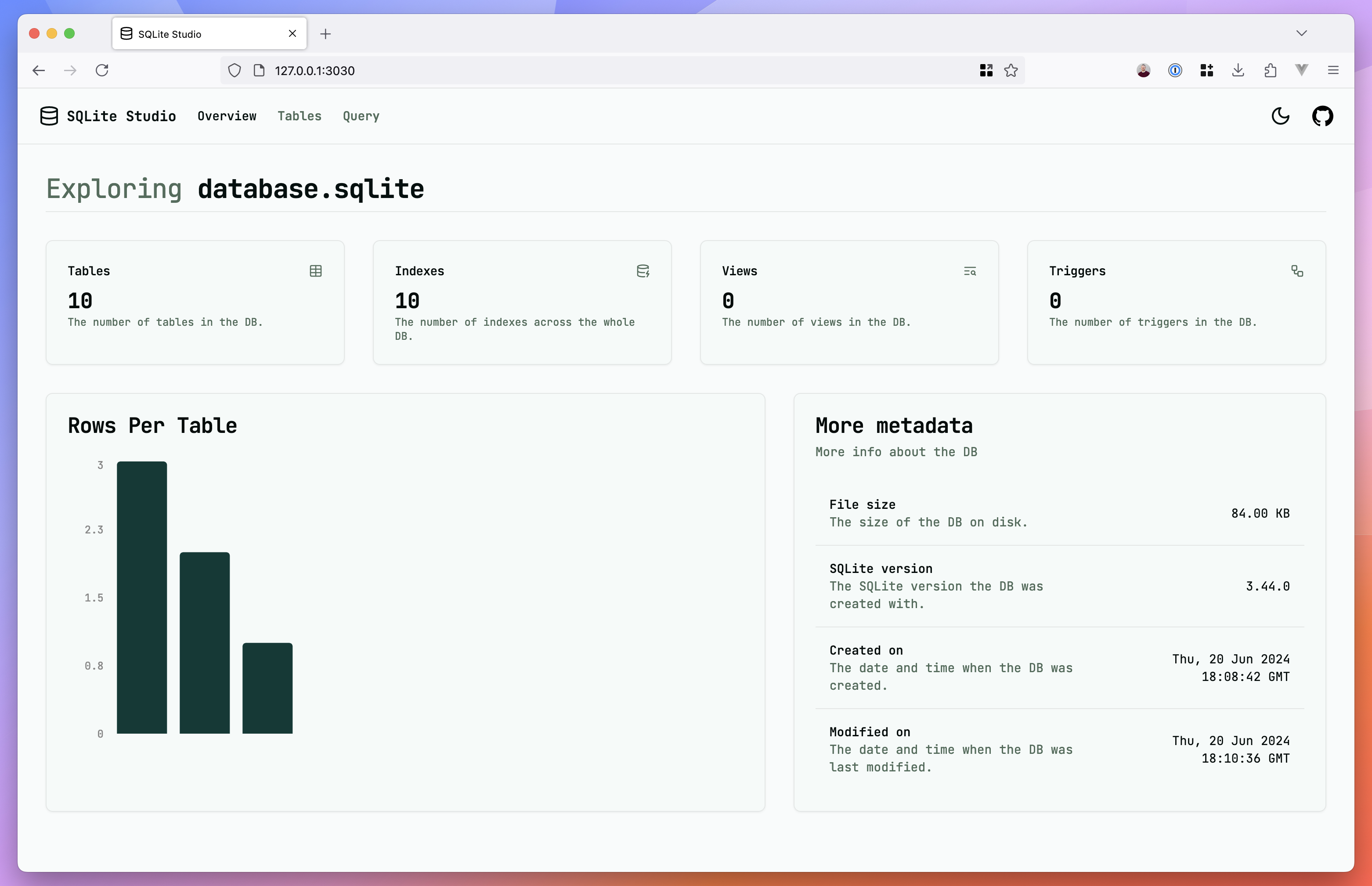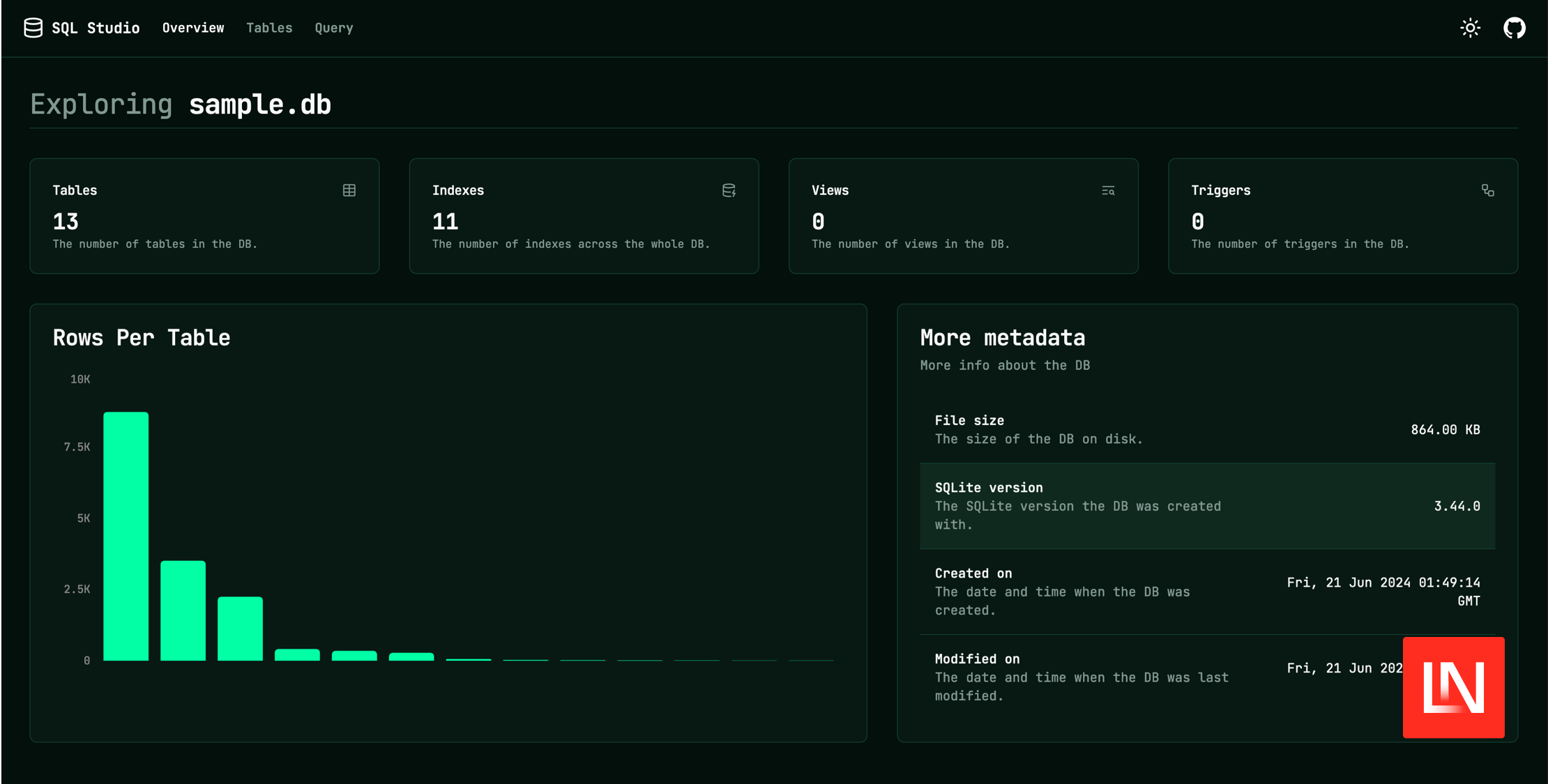SQLite seems to be cropping up everywhere! Laravel 11 uses SQLite by default when creating a new project, and Rails' default database is SQLite as well. A host of Database GUIs now support SQLite. Production services like Turso help use SQLite in production, and many prominent community developers are promoting SQLite.
We covered TablePlus on Laravel News in 2017, and it remains a solid GUI option for managing SQLite databases. Other options include integrated database tools in PHPStorm and other JetBrains products, a full-on database IDE by JetBrains called DataGrip, and many others.
SQLite Studio doesn't necessarily compete with the above-mentioned GUI tools; it is a single-file binary, single-command SQLite database explorer. It offers the following features:
- Overview page with common metadata.
- Tables page with each table's metadata, including the disk size being used by each table.
- Infinite scroll rows view.
- A custom query page that gives you more access to your db.
- Connect to a local SQLite database, a remote libSQL Server, or PostgreSQL Server
My favorite feature is the infinite scroll rows view and the responsive updates as you write SQL queries in the Queries tab:

SQLite Studio also gives you a Birds Eye view of the database on the Overview tab, which summarizes the database file size, SQLite version, total number of tables, rows per table, metadata, and more:

The technology behind SQLite Studio looks fantastic—it uses Rust for the backend and TypeScript, React, Tailwind CSS, and Vite for the UI. If you want to see a live version of SQLite Studio in action, check out SQLite Studio's sample.db. This CLI is open-source on GitHub at frectonz/sqlite-studio.
Related: DevDB - Access your database right inside VS Code! - Laravel News










